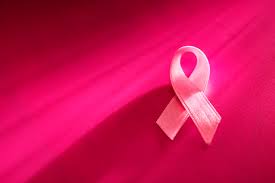 Susan was aghast. She had breast cancer. But she did everything right. She ate her fruits and vegetables. She went jogging every day. She even read her Bible devotional before going to bed every night. Her faith in a just God, who is fair and good was as strong as ever, but, still life just wasn’t fair. She cried as her husband held her lovingly, letting her know he would be with her every step of the way.
Susan was aghast. She had breast cancer. But she did everything right. She ate her fruits and vegetables. She went jogging every day. She even read her Bible devotional before going to bed every night. Her faith in a just God, who is fair and good was as strong as ever, but, still life just wasn’t fair. She cried as her husband held her lovingly, letting her know he would be with her every step of the way.
Eating fruits and vegetables and jogging does not guarantee that you won’t get cancer. A healthy lifestyle will reduce the chances that you will get breast cancer.
Women, by virtue of having breasts, have the greatest chance of getting breast cancer and women with more candles on their birthday cake have a greater chance of getting breast cancer. For women, their family history and genes are the greatest risk factors for getting breast cancer, a topic we discussed in a blog over here.
As part of her surgical treatment for breast cancer, Susan had a sentinel lymph node biopsy to see if her cancer had spread to the lymph bodes under her arm. The greatest predictor of how well you will do in your fight against breast cancer is whether or not the cancer has spread to the lymph nodes under your arm.
The difficulty with breast cancer is that the breast cancer can spread to your lungs, to your liver, to your bones or even to your brain. When breast cancer spreads to your liver, lungs or brain, then these organs eventually fail and life is no longer sustainable.
It is a very tricky, delicate and complicated process for a cancer to learn how to spread, a process we call metastasis. A cancer must learn how to escape the breast; a cancer must learn how to survive in the blood stream and defeat the immune system; a cancer must learn how to exit the blood stream; a cancer must learn how to plant a home in the liver, lung or brain; and then the cancer must learn how to grow in its new home. This is a very complex, difficult process.
The best known predictor of whether a cancer has learned to spread to these distant organs, that is to metastasize, is whether the cancer has learned how to spread to the lymph nodes under the arm. It is a much simpler process to spread to the lymph nodes in the armpit, or axilla.
All the lymph nodes under the arm, a procedure we call an “Axillary Lymph Node Dissection” used to be the standard procedure for women with breast cancer. The risk of an Axillary Lymph Node Dissection is lymphedema, which can happen in up to 40% of women. We hate lymphedema and so does Susan and so does any woman with breast cancer.
How can we reduce the risk of lymphedema? The Sentinel Lymph Node Biopsy is the answer.
If we can reduce the number of lymph nodes that need to be removed, i.e. reduce the extent of the surgery, then we reduce the risk of developing lymphedema. We do this by injecting the breast with a radioactive material, Technitium-99. The Technitium-99 will travel from the breast through the lymphatic spaces to the same lymph nodes, to which the breast cancer would travel.
If there is no cancer in the Sentinel Lymph Nodes, then the remaining lymph nodes in the axilla do not have cancer and a formal Axillary Lymph Node Dissection is no longer necessary. The risk of lymphedema after a Sentinel Lymph Node Biopsy is perhaps 8%.
Susan had a Sentinel Lymph Node Biopsy and thankfully, her Sentinel Lymph Nodes were negative and did not have cancer. She was excited and elated. Her cancer had not learned the how to spread to her lymph nodes and therefore most likely did not learn the techniques needed to spread elsewhere in her body. Most likely, she would not need chemotherapy, but that would ultimately depend on the biology of her cancer.
Susan and her husband went away for the weekend, to take a moment and reflect on this first victory of many. As they walked, hand in hand through the woods, Susan said a quiet prayer to God, thanking him for the gift of life.
